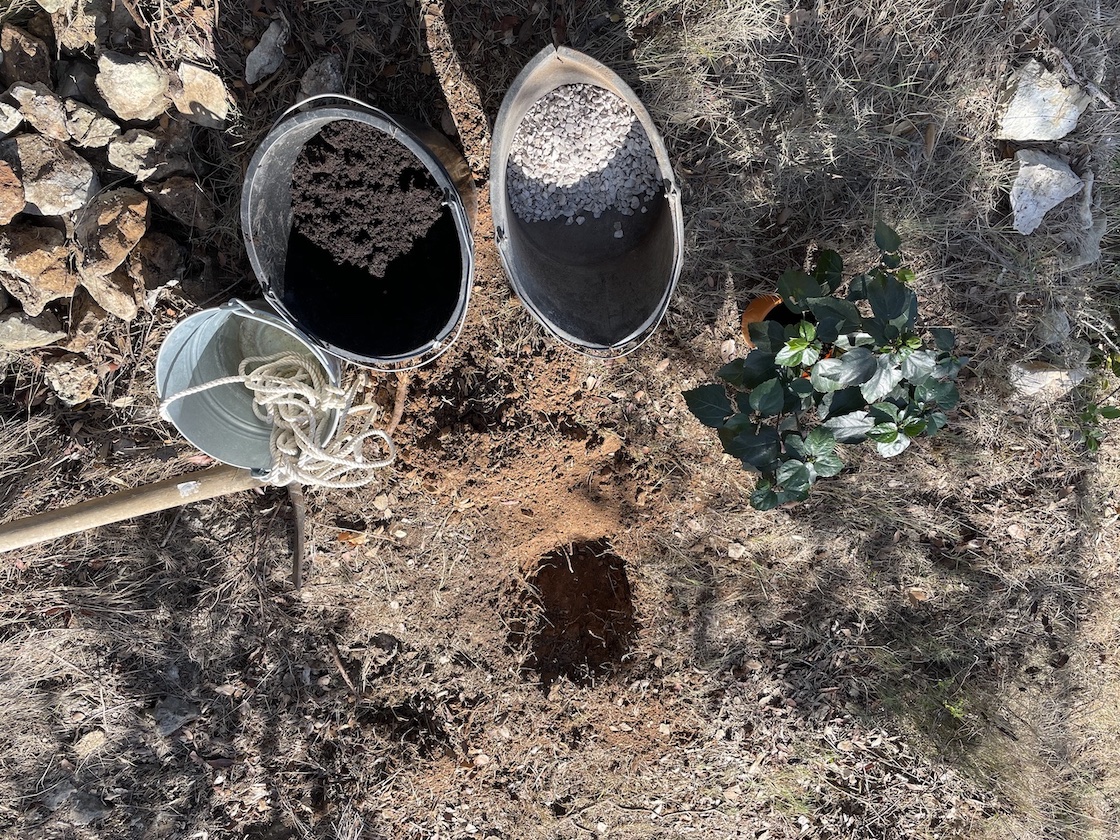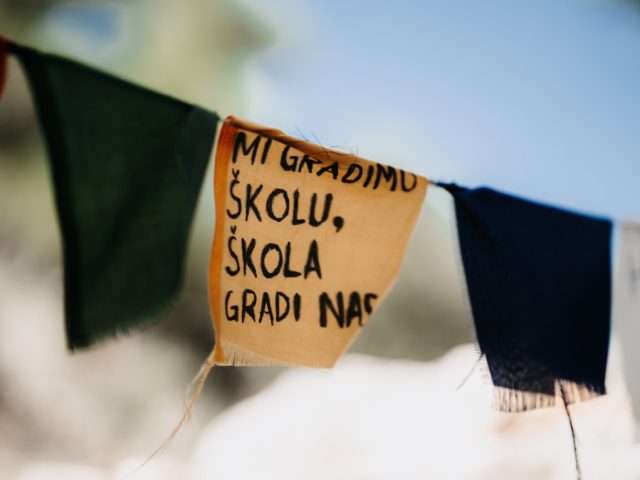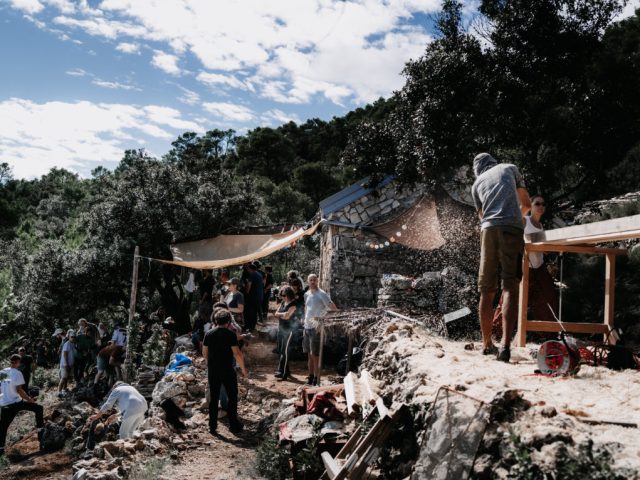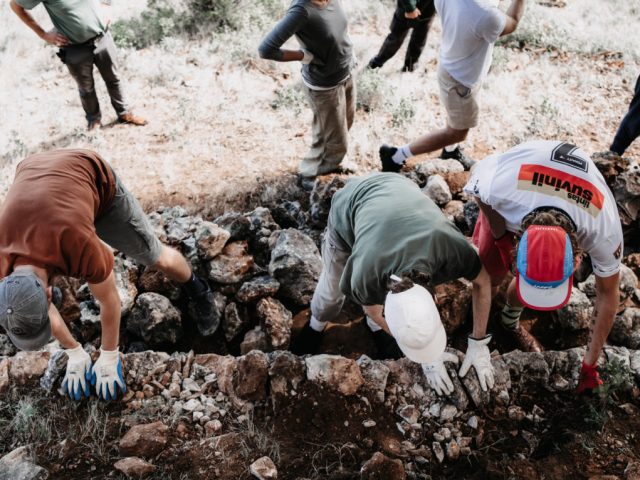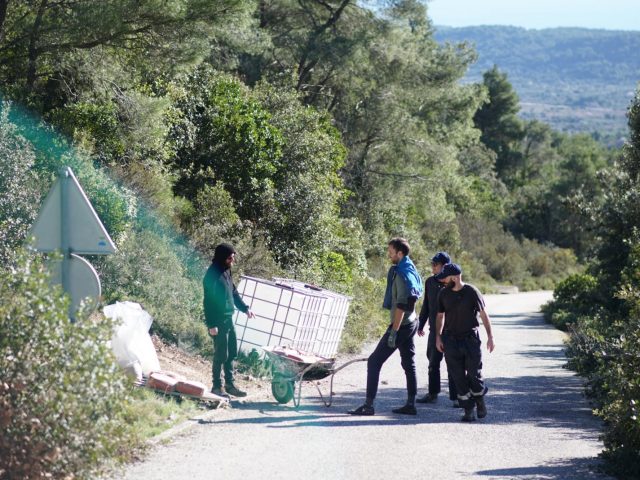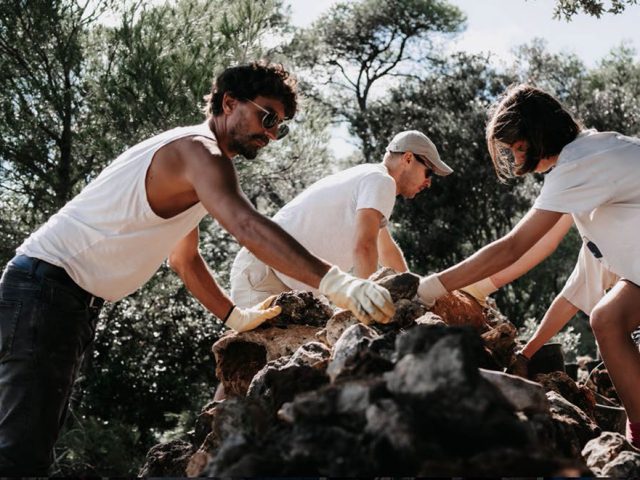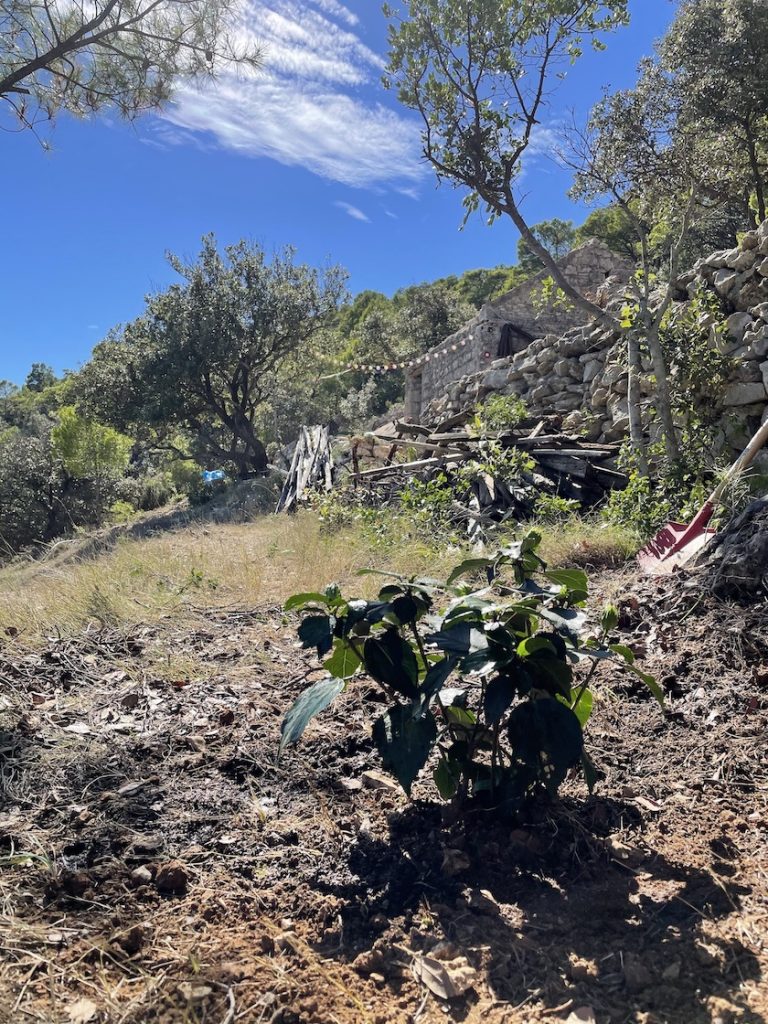
A big part of our school is our ISSA Garden. The garden, like the rest of our plans for the school, awaits our learning, experimenting, and exploring, while dealing with the climate crisis – lack of rain, prolonged droughts, and stronger storms. This is a long-term project, but also one that by its nature never stops, and we are eager to start learning about all the various cultures and seedlings, the different methods (from permaculture to forest gardens), and the different ways of water collection and redistribution.
So instead of drowning in post-apocalyptic melancholy and climate anxiety, we decided not to lose another autumn without planting anything around the school, on its terraces.
We started with a hibiscus seedling, a plant that arrived in Europe during the 16th century, although the ancestors of modern hibiscus hybrids were scattered all around the globe, following the equator from one warm, tropical land to another. The eight hibiscus species considered to be the ancestors of the modern exotic hibiscus originated in Mauritius, Madagascar, Fiji, Hawaii, and either China or India.
We had to seize the opportunity and plant our first hibiscus.
Hibiscus is also known as “flower of an hour”, because some believe that when someone gives you a hibiscus, they are telling you to enjoy every moment of life, that is, to seize the opportunity, because the hibiscus flower only lasts for one day and is replaced the next day by others, and so on until autumn.
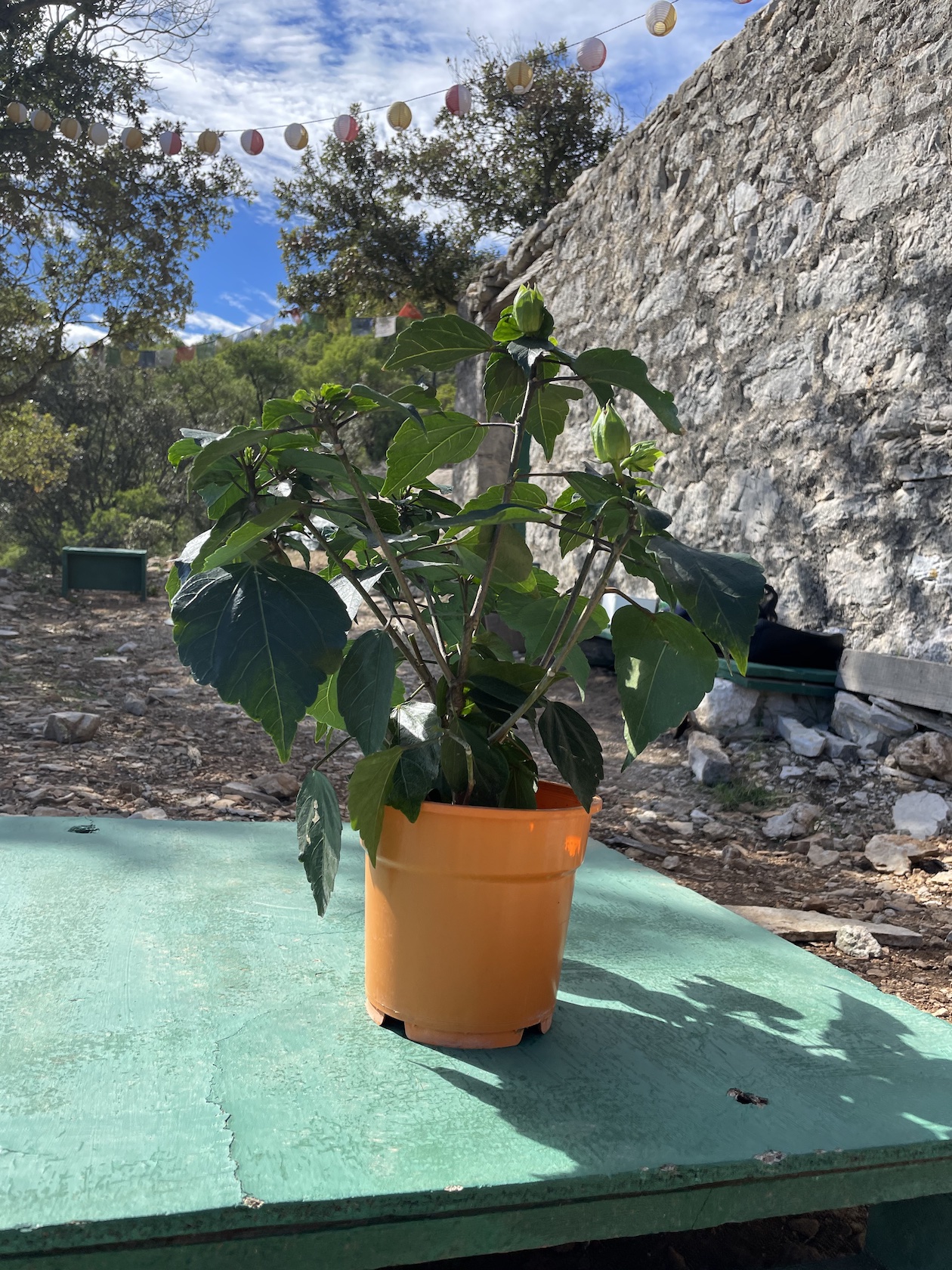

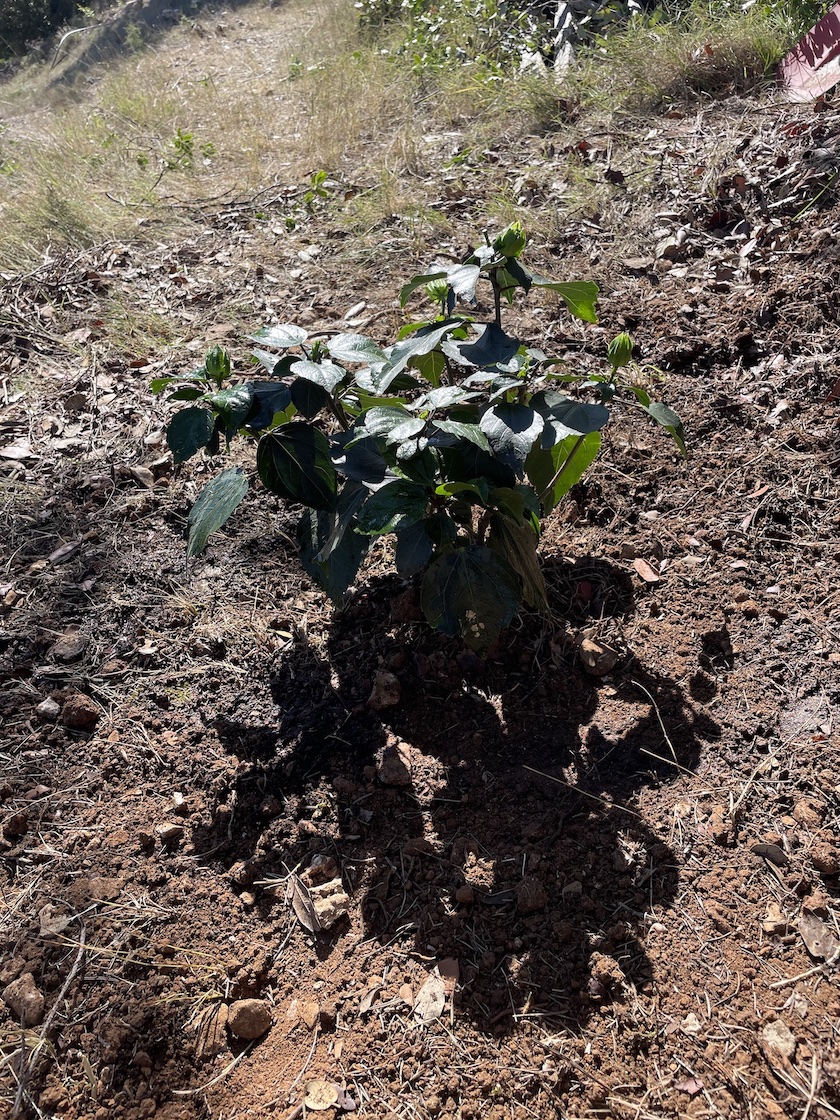
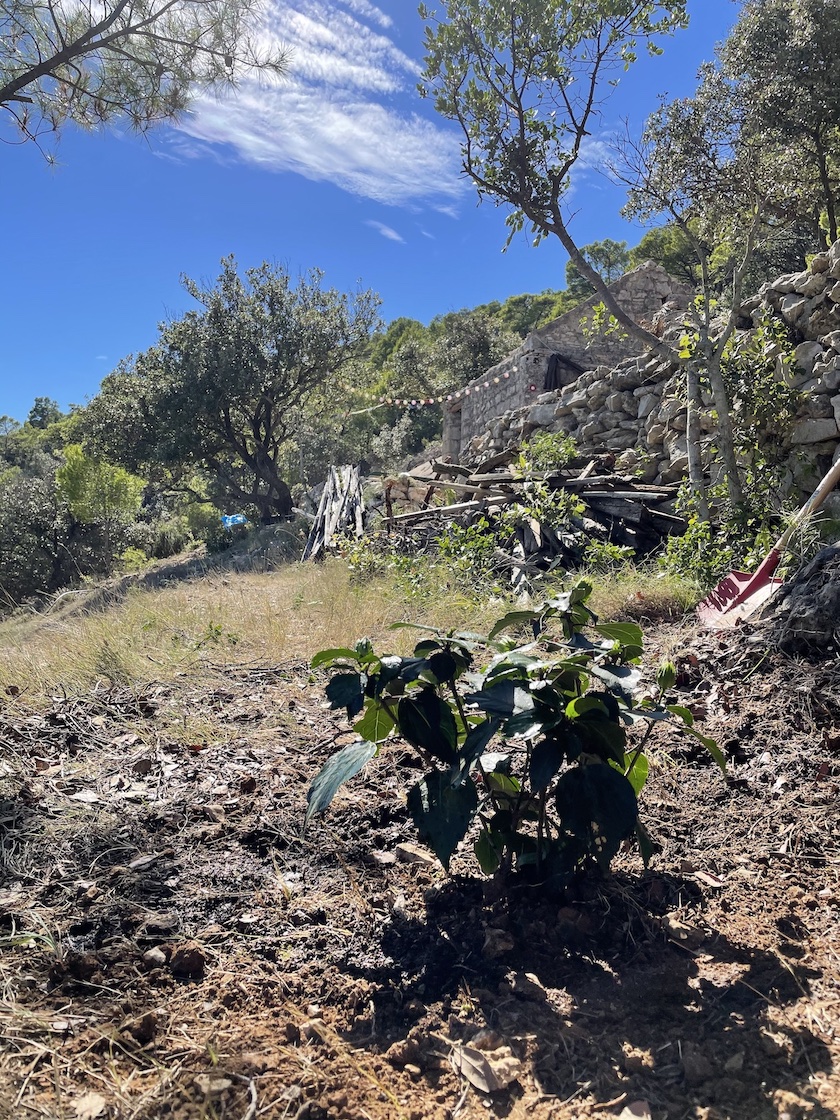
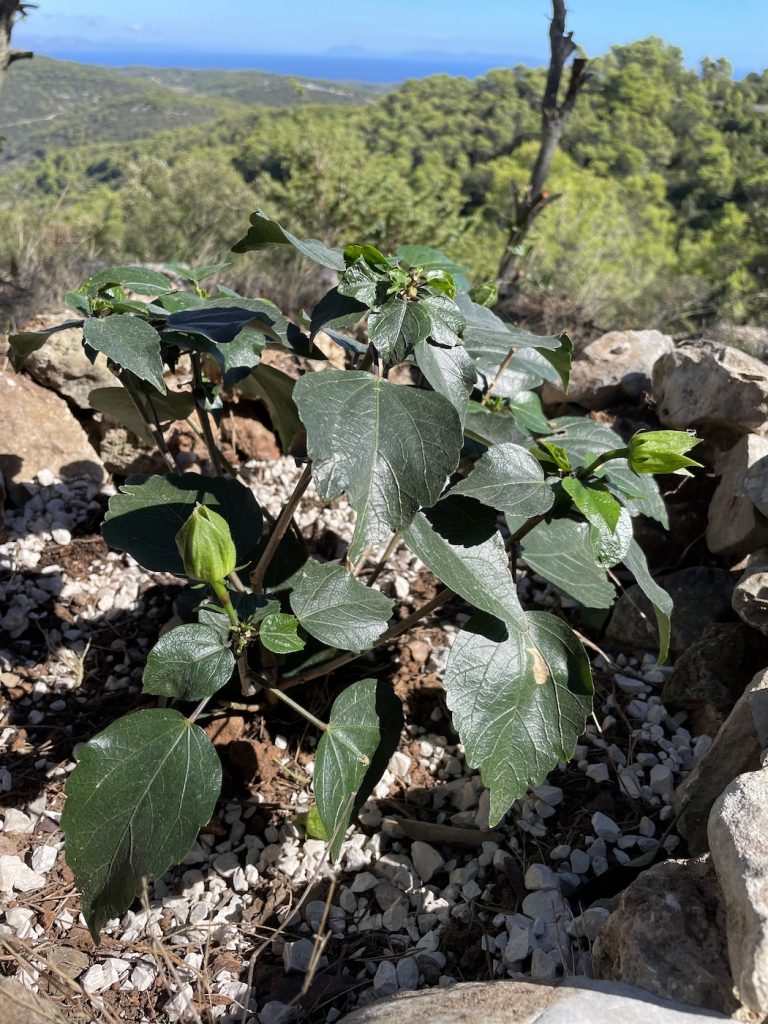
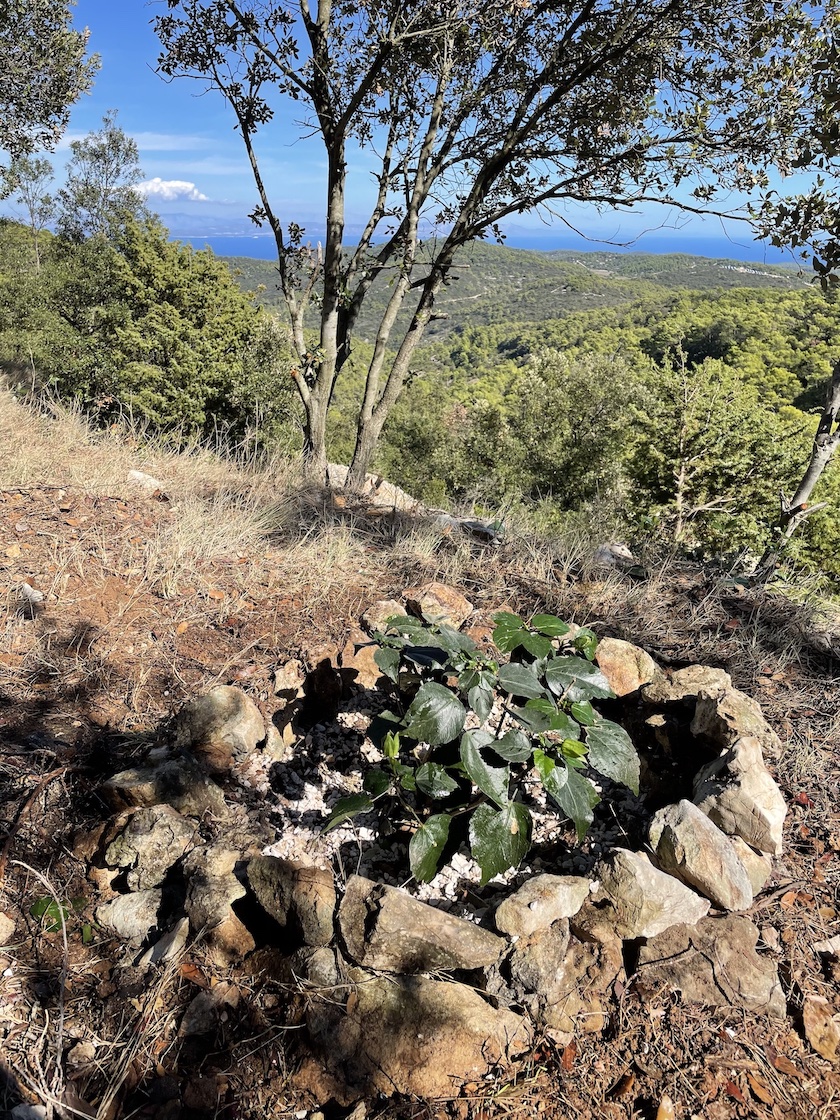
We planted a young cypress tree from the Island of Vis after planting our first hibiscus in hopes that it will take advantage of the sun uphill and its roots will join the existing underground roots network.
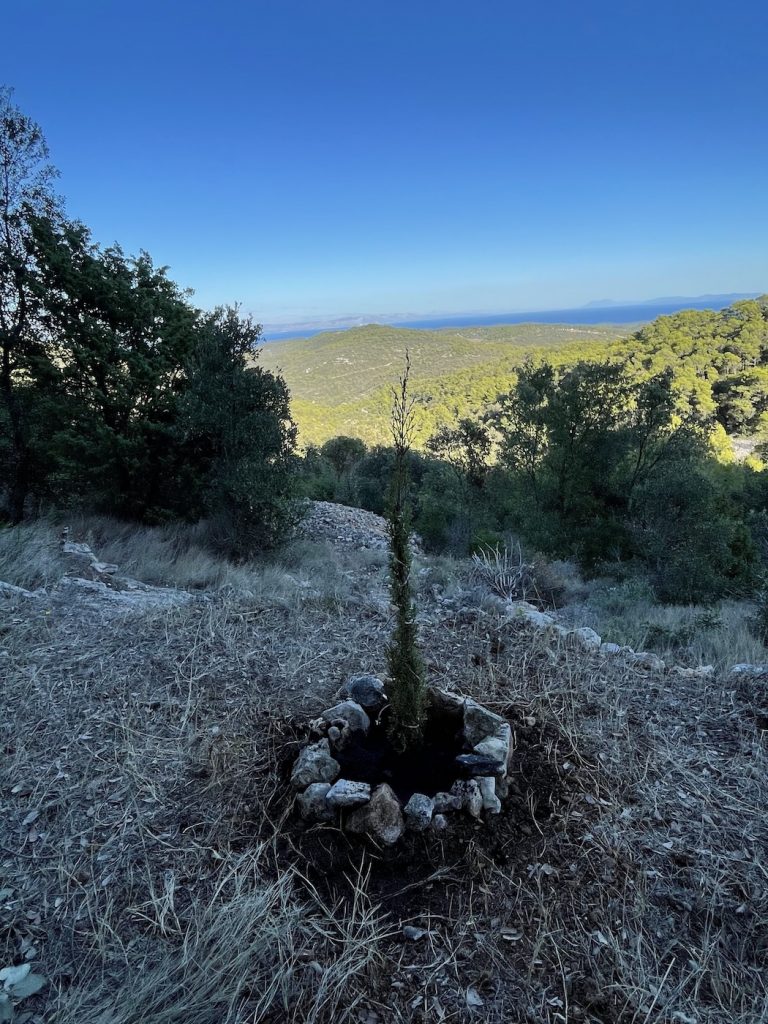
Cypress is usually an extremely long-lived tree; specimens have been recorded that have reached the age of a few thousand years, although the cypress usually lives a few centuries. It originated in northern Iran and spread throughout Asia Minor, Crete, and Cyprus, as well as the entire Mediterranean.
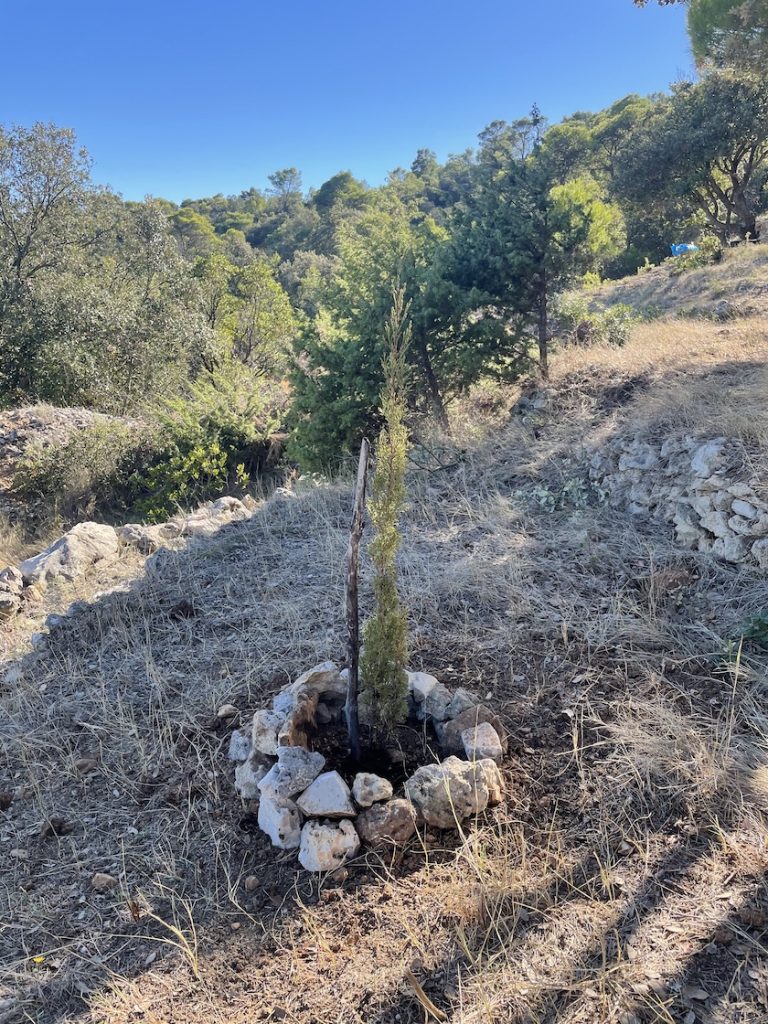
Many ancient peoples planted it around temples and considered it a sacred tree. The Phoenicians and Egyptians valued it as an ancient tree that does not rot but instead hardens in water. That is why they used it to build sarcophagi, ships, temple doors, and statues of deities.
In Greek and Roman tradition, it is associated with the deities of the underworld (Hades and Pluto) and the renewal of life, because its evergreen leaves and incorruptible wood evoke immortality. That is why it is still commonly found today in the cemeteries of the Mediterranean.
We will keep you updated about the evolution of these two beautiful beings, our first hibiscus tree and our first cypress tree. This is just a modest and hopeful beginning.
